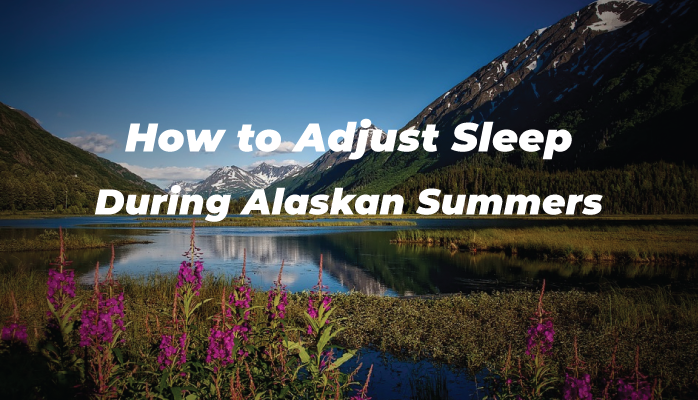Why Sleeping in Alaskan Summers in Difficult (If it Isn’t Obvious)
Alaska is a big state. It’s particularly big from north to south, spanning a total 1,300 miles. Because this state is so big, there are differences in what the north and south experience. Southern parts of Alaska have summer light transitions that are uncomfortable but not drastically different than much of the northern part of the lower 48. From Anchorage on up, however, the transition ranges from drastic to as extreme as it gets.
How much you have to prepare for your transition, and how much it may affect you, largely depends upon:
- How far north you are
- How sensitive you are to light
- Perhaps most importantly, what existing measures you have taken to normalize your circadian rhythm during the winter
On the last bullet point if you have been diligent about any of the following, the transition will likely be easier:
- Using light therapy
- Maintaining pre-sleep rhythm
- Having consistent exercise and eating/drinking habits
- Vitamin D therapy
Why Alaskan Summers Can Be Bad for Sleep
Alaskan summers are tough on sleep because there is so much light. Like the extreme darkness of the winter, a lot of light can inhibit normal melatonin production, which in turn can disrupt your circadian rhythm.
Unfortunately, a lot of light also has the added effect of being physically disruptive for sleep. You have to physically try to block the light out of your room, and, psychologically, it always feels like daytime.
Furthermore, there is an odd pressure many feel to get so much done in the summer Alaskans are cooped up all winter. Alaskan’s who are not “winter people” may struggle with this more.
Ways to Adjust Sleep During Alaskan Summer
The transition from summer to winter can be particularly hard for several reasons: a lot of potential for change in habits, activities, and socializing. Also, your circadian rhythm cycle may have adjusted to the environment (darkness) and is now required to respond to different cues.
Some ways to help adjust are:
- Use light therapy in winter and early spring
- When you stop using light therapy, start using blackout curtains in your room
- Invest in good blinds to use in common rooms you spend time in to be used in the evening
- Try and get as much fresh air (walks are good!) as possible after work
- Try and be aware of how your habits change during the winter-summer transition, and ease yourself into the “summer norm”
- Importantly, try and keep the same sleep schedule and routine
The reality is that seasonal insomnia or sleep disorders may be very difficult for you to prevent or mitigate. If you have tried everything and are still struggling, feel free to talk to us.
Don’t Forget About Winter: Alaskan Winters Can Be Difficult Too!
Contrary to what you might initially expect, the prolonged darkness is not always conducive for sleep. In Alaska’s dark winters, many people regularly struggle with insomnia and circadian rhythm disorders. This is because the extreme darkness can negatively effect people's emotional, physical, habitual, and sociological well-being.
Also, melatonin (the hormone that regulates sleep) responds to light/darkness changes. Without the change in light, our brains do not get those cues and changes.
Some people are very good about maintaining consistent social lives, habits, and emotional equilibrium, but many of us aren’t. In all cases, such changes can make it hard to sleep normally.
If you are struggling with getting a good night's rest, please click the orange button below to take a free online sleep test and talk with one of our sleep health expert.


